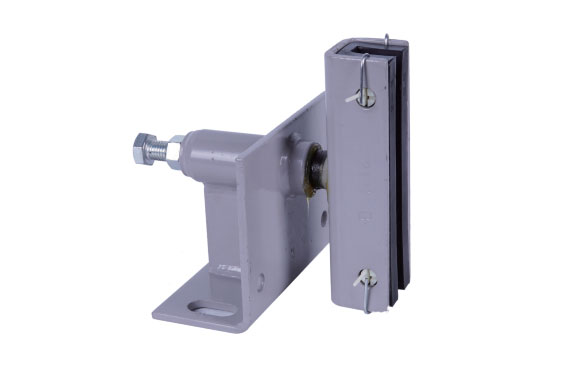
Sliding guide shoe and elevator manufacturing method
Typically, elevators comprise substantially vertical guide rails provided in the elevator shaft, by means of which guide rails are guided, the elevator car is adapted to travel up and down the elevator shaft. Sliding guide shoes are mounted on the top and bottom edges of the elevator car or car hanger, the guide shoes being arranged to guide the passage of the elevator car on the guide rails. The most commonly used types of guide shoes are sliding guide shoes and rolling guide shoes.
For low car speeds of less than eg 1.75m/s, the car is equipped with sliding guide shoes, while rolling guide shoes are used at high speeds. In addition, other types of guidance systems, such as contactless magnetic guidance, are also known. The present invention more particularly relates to sliding guide shoes of elevator cars.
A low speed elevator guidance system includes a track and a guide shoe having a frame and a low friction wear shoe lining located in the frame, the frame being rigidly attached to the elevator car or counterweight. During the installation phase, the guide rails are not brought into the hoistway over their entire length, but they are assembled in the hoistway from a length of guide rail elements, which are connected end-to-end in succession during the installation phase, so that in normal operation Provide support to the elevator car and counterweight in the lateral direction in the event of an emergency stop, etc. Each elevator car typically has four sliding guide shoes sliding on two vertical guide rails, although other configurations are possible.
In the prior art, the wear shoe lining of the sliding guide shoe slides on the rail for providing low friction sliding with a suitable lubricant. Typically, boot lining materials are polymeric materials such as polyethylene, polyamide, polyurethane. Existing sliding guide shoes also have vibration damping material to prevent sliding contact noise and vibration from entering the elevator car.

Wear due to sliding determines the life of the shoe lining, with a typical wear depth of 1-2mm. Therefore, prior art lubricators are used to lubricate the contact surface of the guide rail and the shoe lining, the lubricator being located on the top of the guide shoe so that the lubricant can be distributed throughout the elevator travel. For maintenance purposes, the condition of the lubricant needs to be known, and if there is a lack of lubricant, the shoe lining will be worn at an accelerated rate.
Additionally, the guide shoe has replaceable shoe linings in contact with the guide rails, which provides easy maintenance and replacement of worn shoe linings. When the friction depth of one shoe lining reaches a threshold that affects the running quality of the elevator, the sliding guide shoe is maintained by replacing the shoe lining.
Therefore, it is necessary to know the wear condition of the shoe lining and the condition of the lubricant in time to avoid excessive wear of the shoe lining, thereby reducing the life of the shoe lining.
 Email:jiugang@kshzjd.cn
Email:jiugang@kshzjd.cn
 Website:m.kangtu.net.cn
Website:m.kangtu.net.cn
 Address:NO. 382, Jianlin Road, Zhangpu Town, Kunshan City, Jiangsu Provine. 215326
Address:NO. 382, Jianlin Road, Zhangpu Town, Kunshan City, Jiangsu Provine. 215326